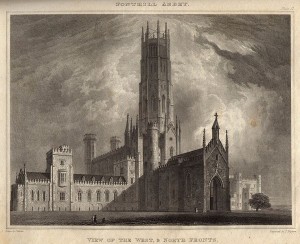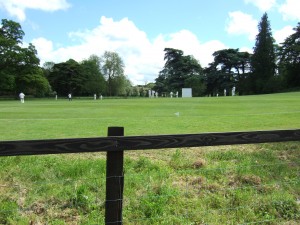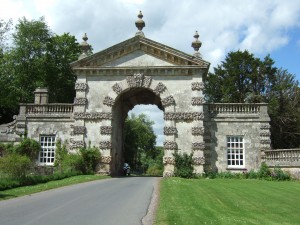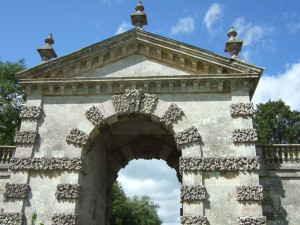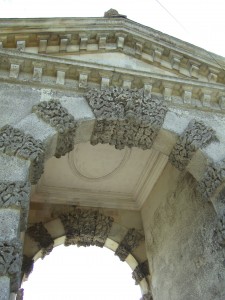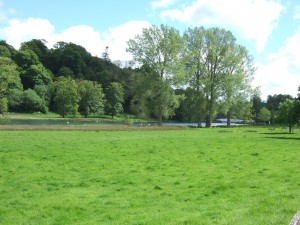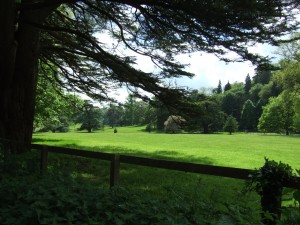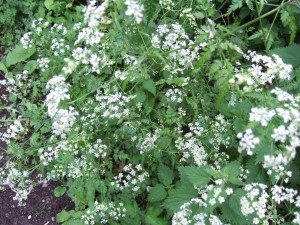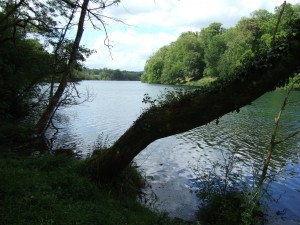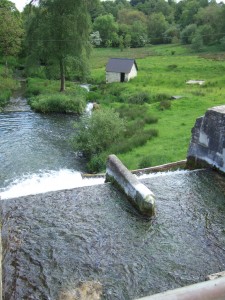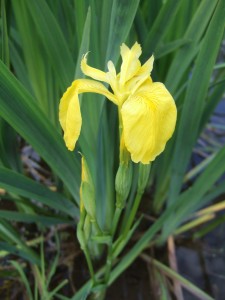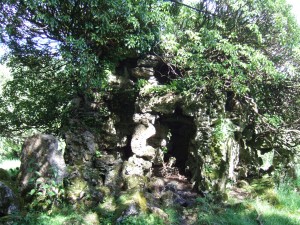Chap (my better half) and I went for a walk this afternoon around Fonthill Lake, in south Wiltshire, near the small village of Fonthill Bishop. Here the eccentric and phenomenally rich William Beckford (1760—1844) built his famous (or perhaps that should be infamous) Fonthill Abbey—while it still stood one of the great tourist attractions of the country. Construction on the Abbey, which despite its name was never a religious house, was started in 1796 and after its 300-foot high tower fell for the third time in 1825, the Abbey was demolished. The Fonthill Estate is now owned by Lord Margadale.
As well as building the Abbey, Beckford landscaped the estate grounds. He dammed a small stream to form the long, sinuous Fonthill Lake, and built an impressive gateway into his estate on the Fonthill Bishop to Hindon road. He scattered grottoes and statuary around the estate. Money was no object.
We parked up near the village cricket ground, where a match was in progress. Neither Chap nor I follow cricket so we had no idea what was going on. It looked very picturesque though.
We walked past sheep and lambs grazing on the lush green pastures to the gateway with its fabulous green men keystones—talk about making an entrance!
The lake might look familiar—all the river scenes in the Johnny Depp and Juliette Binoche film Chocolat were filmed here.
The estate parkland is beautifully planted, with some wonderful mature trees, including pink-flowered horse chestnuts. I love this time of year—the green of the grass is almost unreal it’s so zingy. May is definitely my favourite month.
The may blossom (hawthorn) is just starting to go over, and the cow parsley is too—together they make such a beautiful white froth of blossom.
At the head of the lake by the dam is a hydropower unit installed in 2011 that generates enough electricity from the dam outflow to power 11 typical houses. Yay for green power!
Where the little building is now, in 1820 stood a 105-foot long, six storey woollen mill, powered by three water wheels and employing 200 people. It wasn’t a financial success and so was removed in 1830 by the new owner (Beckford had sold up by then) to restore the aesthetics of the lake.
Pretty yellow flag irises grow around the lake edge.
On the way back we saw a fresh, newly-hatched lacewing fluttering about, and it settled on Chap for a bit. They have the most beautiful coppery coloured eyes.
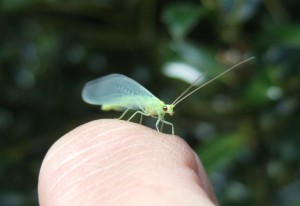
Lacewing (Chrysoperla carnea) on Chap’s finger. (For the benefit of readers of a nervous disposition, I’ve cropped out his hairy knuckles!)
We stopped to investigate one of the grottoes—this one was built out of tufa blocks and had the most massive ivy plant (more like a tree, really) growing atop it. Someone had been having a fun evening there: there were the remains of a bonfire and an empty glass perched on the grotto (bonus points if you can spot it!)
As we walked back to the car the cricket match was finishing to the sound of clapping—and then tea and cakes in the pavilion, no doubt.
